Under the Sycamore Trees: Magic and Mystery in Twin Peaks (Pt. 1)
For C.P.- “For I am like a refiner’s fire.”
Through the darkness of future past,
The magician longs to see
One chance out between two worlds:
Fire, walk with me.
An Invitation to Love: The Black Lodge Edition
ADVERTISEMENT
A couple of years ago I called my best friend crying in a state of turmoil; I was yelling at him for not warning me about the end of Twin Peaks. Granted, at the time I was embroiled in a nasty love affair, drinking pretty heavily, and have always been an emotionally volatile person. I wonder every so often if there’s a possibility I’m a high functioning schizophrenic. All those things considered, there’s still something to a show that can elucidate such a violent reaction. Twin Peaks is shit hot television for multiple reasons; one of which may be its magical elements of composition.
About a year later I was more-or-less fixed up and in a much better place when another friend was viewing David Lynch and Mark Frost’s show for the first time. When it ended he, like so many other viewers, felt screwed out of a satisfying conclusion. There were so many stories and ideas to be explored that were curtailed by the cruel executives at ABC and the general stupidity of the American viewing public. (I mean, seriously…it seems like goddamn Two and a Half Men as been on for decades.) It was on the first day of this year, which already seems like a fucking lifetime ago, that I made him a guide to some of the occult underpinnings present in the show for his further amusement and edification. Humorously, perhaps tellingly, I titled the guide the “Black Lodge Do-It-Yourself Possession Kit.” Good god, I hope there’s at least one Twin Peaks fan reading this… it may read like nonsense otherwise. As the ever-so-sophisticated Dick Tremayne says; “This is all so… technical.”
 In the likely circumstance that some, if not most, of the readers looking over this aren’t overly familiar with the show, here’s a rundown for you. Twin Peaks was a television series aired for little more than a year from 1990-91. Famous today for it’s cult following, it was known at the time for being one of the strangest shows to ever be broadcast. Understandably, as one of its creators, David Lynch, should be immediately recognizable as one of the most important filmmakers and surrealists of the late twentieth century. With a repertoire of films such as Eraserhead, The Elephant Man, and the spectacular Blue Velvet under his belt by the time he collaborated with Mark Frost on the show, weird things could generally be expected from him. To grossly oversimplify the plot, Twin Peaks is about the investigation of the murder of a local homecoming queen Laura Palmer by the quirky and admirable F.B.I. Special Agent Dale Cooper (played by Kyle McLachlan) that takes place in the eponymous town which is a vital character in its own right. Filled with brilliant, if disconcerting, camera work and character development it also included themes such as possession (perhaps demonic), prophetic dreams, and the posited battle between good and evil, all juxtaposed with a (decidedly sinister) small town atmosphere, cherry pie, and excessive caffeine abuse.
In the likely circumstance that some, if not most, of the readers looking over this aren’t overly familiar with the show, here’s a rundown for you. Twin Peaks was a television series aired for little more than a year from 1990-91. Famous today for it’s cult following, it was known at the time for being one of the strangest shows to ever be broadcast. Understandably, as one of its creators, David Lynch, should be immediately recognizable as one of the most important filmmakers and surrealists of the late twentieth century. With a repertoire of films such as Eraserhead, The Elephant Man, and the spectacular Blue Velvet under his belt by the time he collaborated with Mark Frost on the show, weird things could generally be expected from him. To grossly oversimplify the plot, Twin Peaks is about the investigation of the murder of a local homecoming queen Laura Palmer by the quirky and admirable F.B.I. Special Agent Dale Cooper (played by Kyle McLachlan) that takes place in the eponymous town which is a vital character in its own right. Filled with brilliant, if disconcerting, camera work and character development it also included themes such as possession (perhaps demonic), prophetic dreams, and the posited battle between good and evil, all juxtaposed with a (decidedly sinister) small town atmosphere, cherry pie, and excessive caffeine abuse.
In my ever humble opinion, Twin Peaks is essential viewing for any paranormal enthusiast. While it wasn’t the first supernatural television show by any means it still made an undeniable impact on that part of our culture. Unlike its younger brother The X Files (whose David Duchovny guest starred in TP as the cross-dressing DEA Agent Denise), Twin Peaks isn’t valuable to our interests because of any obvious parallels with actual anomalous phenomena, I mean to say, I haven’t heard of any Man from Another Place sightings… though I have pointed out the similarities between a murder documented on here and Killer BOB. It is valuable because in its very fabric there is something uncanny taking place; while much of this can be attributed to artistic mastery and subtle psychological manipulation I would argue that there is an authentic, if not exactly appetizing, does of magic and the occult to the whole matter. Then again, I wouldn’t really argue those elements are mutually exclusive. What I’m positing is Twin Peaks may be the event, the anomaly, itself. So pour yourself a damn fine cup of coffee and prepare for the Occult Secrets of Twin Peaks to be revealed.
During the second season, things get weird. Not that they haven’t already been weird but the whole show, and town, seem to disintegrate after creators answer the infamous question; “Who killed Laura Palmer?” To much of the swineherd that watched the show the act of answering this question, heretofore the evident driving force of the series, defeated the point of continuing the story. There are alleged Twin Peaks “fans” who will snottishly express the opinion that the second season is somehow inferior to the first; they are a fringe element that will be dealt with harshly and swiftly when I rise to power. (Insert shouting in German and pulpit pounding.) But I digress, during the second season the elements that any viewer will come to be associated with a motif that occurred in the third episode after the pilot, a famously bizarre dream sequence in a red room, come back with a fury. References to the Lodges, cosmic forces of good and evil that seem to be based conversely outside of the town and inside of the hearts of man, are replete in actions of the characters and events in the town as the violent, mind-wrenching, game of chess between Agent Cooper and his former, now mad, mentor Windom Earle draws toward a terrifying stalemate. The conclusion, or what we’re provided in place of a conclusion, occurs under the sycamore trees…
 “Once upon a time, there was a place of great goodness, called the White Lodge.” So begins Windom Earle’s parable about the genesis of the Lodges, both White and Black. Typically, white represents goodness and purity, while black represents evil and power…the power to reorder the earth itself. Among the fans of the series it is generally known that Lynch and Frost borrowed the concept from an adventure novel, The Devil’s Guard by Talbot Mundy. This particular novel takes place in the continuity of Mundy’s Jimgrim and Ramsden series which were published during the nineteen twenties and thirties. Jimgrim is the nickname of an adventurer, an Allan Quatermain type, whose excursions into the Orient draw him into encounters with mysterious immortals and secret societies. Mundy himself was involved with the Theosophical Society, the occult group started by the marvelously disreputable Madam Blavatsky and responsible for much of the magical revival of the late-nineteenth and early-twentieth centuries. During the time he authored The Devil’s Guard he was not only a member of the Society according to this one nice website but a “prominent and leading member.” Whilst discussing the resurrection of pulp adventure during the second magical revival of the twentieth century, Gary Lachman describes Mundy as an ex-confidence man (oh well, Blavatsky and Gurdjieff were both implicated in very mundane confidence schemes at points), who was the “master of the mystical adventure” with his tales constituting the main precursor of Indiana Jones.
“Once upon a time, there was a place of great goodness, called the White Lodge.” So begins Windom Earle’s parable about the genesis of the Lodges, both White and Black. Typically, white represents goodness and purity, while black represents evil and power…the power to reorder the earth itself. Among the fans of the series it is generally known that Lynch and Frost borrowed the concept from an adventure novel, The Devil’s Guard by Talbot Mundy. This particular novel takes place in the continuity of Mundy’s Jimgrim and Ramsden series which were published during the nineteen twenties and thirties. Jimgrim is the nickname of an adventurer, an Allan Quatermain type, whose excursions into the Orient draw him into encounters with mysterious immortals and secret societies. Mundy himself was involved with the Theosophical Society, the occult group started by the marvelously disreputable Madam Blavatsky and responsible for much of the magical revival of the late-nineteenth and early-twentieth centuries. During the time he authored The Devil’s Guard he was not only a member of the Society according to this one nice website but a “prominent and leading member.” Whilst discussing the resurrection of pulp adventure during the second magical revival of the twentieth century, Gary Lachman describes Mundy as an ex-confidence man (oh well, Blavatsky and Gurdjieff were both implicated in very mundane confidence schemes at points), who was the “master of the mystical adventure” with his tales constituting the main precursor of Indiana Jones.
In Mundy’s novel, which supposedly differs from much of the contemporary writing about the Far East due the fact that it paints oriental peoples as equal to Westerners, (I’m not so sure about this statement, but at least his villains aren’t bumbling or stock-board stereotypes… even then he may use “the Old Jew” as a descriptor too much.), the explorers are drawn through the Himalayas where a battle is taking place between two rival Lodges. The narrator, Ramsden is a proto-Agent Cooper as he upholds morality and loyalty and searches for his onetime compatriot Elmer Rait whose lust for knowledge and association with the the Black Lodge with its dugpa sorcerers makes him a nice analog for Windom Earle. Naturally the Black Lodge is at war with the White Lodge. Most of the reviews I have read from the reviews of Mundy’s novel dismiss it as unimportant beyond the point that it contains the original concept of the Lodges. This is ridiculous as not only is Mundy regarded as an entertaining writer, leading me to suspect they haven’t actually read the book, it also contains the story of the dugpas.
“These evil sorcerers, dugpas, they call them, cultivate evil for the sake of evil and nothing else…this ardent purity has allowed them to access a secret place of great power…”
This is a pretty terrifying concept, I’m sure you’ll agree, which is explained by the wretched Earle who wants to bargain with or become one of these black magicians. Like the many other nuances that make Twin Peaks so entertaining and immersive this is never fully fleshed out or explained. It is up to the viewer to decide what the dugpas are and if one is ever present in the show. Perhaps Killer BOB, who is primarily portrayed as a trans-migratory spirit, is a dugpa; there are ways, probably incorrect, to interpret the series that BOB was once a serial killer as a man. He could have made a bargain that made him into a dugpa. Personally I don’t think so, due to BOB’s enormous power I feel he is one of the “native inhabitants” of the Black Lodge. In a way this makes the dugpas all the more terrifying. Who or what are they? Where are they?
The little historical information I can find tells me that in “reality” the dugpas or “the red-hats” are a sect of left-hand (a term for mystic traditions typically regarded as dark or evil) Tibetan Buddhists founded in the thirteenth century. They are reminiscent and oftentimes confused with the Bonpas or Bon Sorcerers. These wicked mystics are present in Alexandra David-Neel’s A Tibetan Tale of Love and Magicwhich I have not read; I do know that they are described as boiling down hapless travelers that stray into the mountain vales under their domain into an ointment that grants youth. David-Neel also tells us that “dugpa” means thunder, due to the fact they were the first sect to build their monastery in the midst of a thunder storm. Perhaps it was the wrath of the heavens raging at their defiance: in Mundy’s novel they are depicted as failed initiates to the White Lodge who, out of resentment and lust, have turned to forbidden knowledge to aid their rebellion. Supposedly some sects that are descended from the dugpas still exist openly in the world today.
When I first read the description of the Black and White Lodges I was immediately reminded of Aleister Crowley’s Moonchild: of The Butterfly Net, upon further inspection it would seem that at least one other commentator had this idea as well. Published in 1917, Crowley’s best known novel consists of the operation to create a “moonchild”, a messiah or antichrist depending on personal persuasion/grade of initiation, by the White Lodge and the attempts of the Black Lodge to thwart any such occurrence. Here the White Lodge is a thinly veiled portrayal of Crowley’s own magical society, the A.’.A.’., it would then go to follow that the Black Lodge would be populated by his enemies and former colleagues from the Order of the Golden Dawn. While I really like Crowley and pretty well agree with his conclusions about people, it goes without saying that the characters should be taken with a grain of salt. Crowley is a trickster working in the field of admitted fiction; that said, he also went back and declared Moonchild to be a fanciful retelling of an actual magical operation. If that’s true then maybe the moonchild or its descendants walking around out there…Crowley indicates it was brought to North America. In the novel there are some pretty genius explanations of magical concepts and ethics and again, despite what modern critics say I think it is a cracking good read.
Moonchild Versus Dugpas: the secret war that affects your everyday life; I smell a book deal. I can’t believe how much there is to write about this topic; Twin Peaks is a famously complicated show however and like any surrealist work it mimics the unconsciousness. As any psychoanalyst can tell you dreams and the unconsciousness can be interpreted; as many an artist will tell you they can be interpreted endlessly. It looks like this is going to have to be a two–parter, one for each Lodge, and next time around we’ll look at the fearsome Dweller on the Threshold, why there should be a free Tibet, and making the magic of Twin Peaks “work.” In the meantime, I know you’re all waiting eagerly for your Finding Bigfoot DVD and the release of Planet Weird. In the meantime, why don’t you swing by Amazon or Netflix and check out Lynch and Frost’s masterpiece? I always fell like returning to the R.R. Diner and One-Eyed Jack’s when the crisp Autumn air moves in; after all, Fall and Winter are traditionally associated with the genres of tragedy and irony, both of which Twin Peaks has in spades. Until next time, remember, the owls are not what they seem.
Note: On further consideration Cooper, with his career excellence and abundance of wisdom, is much more akin to Jimgrim than Ramsden. Ramsden, who is a stolid friend, simple, but pure is much more like Sheriff Truman. By reading The Devil’s Guard and drawing obvious conjectures, obvious upon a little bit of meditation that is, I feel that one can find where Twin Peaks would have ended up if it had been continued.
MORE GREAT STORIES FROM WEEK IN WEIRD:


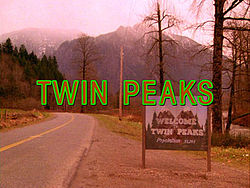


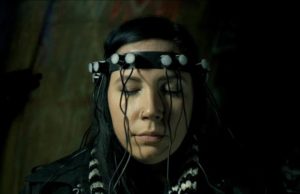
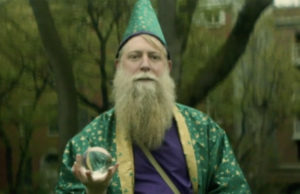
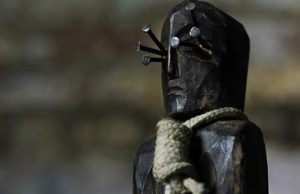
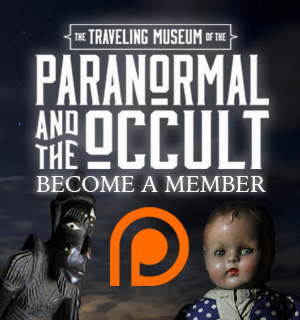
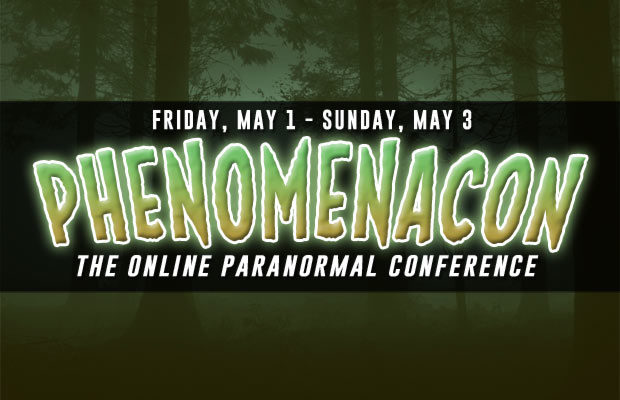
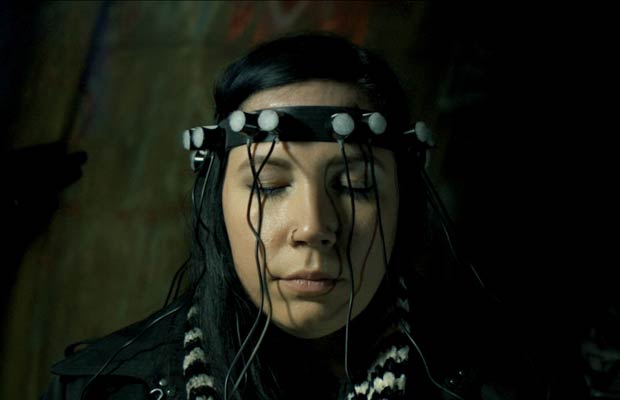
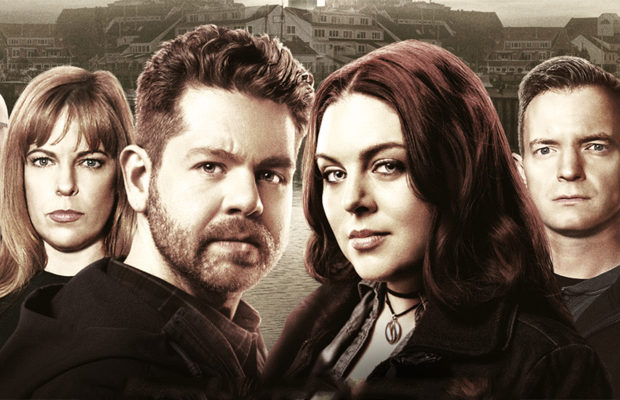
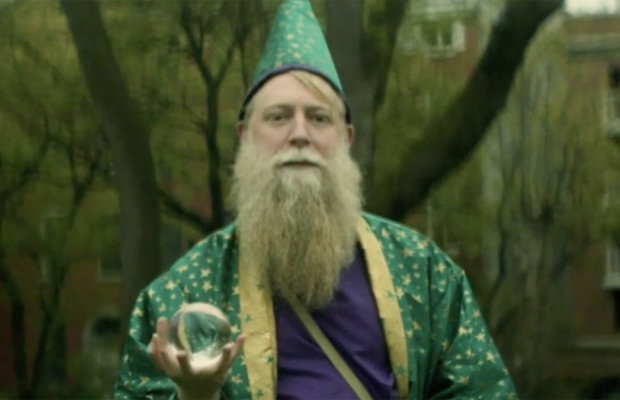

You must be logged in to post a comment Login